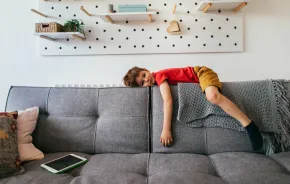Public schools are struggling to keep up with the growing number of students with autism.
Nationwide, one in 68 individuals is diagnosed with an autistic spectrum disorder. The rate of autism is particularly high in the Northeast and on the West Coast. The recent hike in rates is probably due to increased recognition and professional diagnosis of high-functioning autism.
Kids with severe autism need specialized environments that can only be provided by private schools. But kids with high-functioning autism can and should be folded into the public schools. Keeping these kids in the local schools is good for the autistic kids, for the typical kids and for the bottom line.
Through interactions with typical kids, mildly autistic kids can learn appropriate social skills and expand their pragmatic language skills. Quirky kids can gain more from a natural, normal environment than an isolated, lonely, understimulating one in a special education school. They may even make real friends.
Blending autistic kids into local schools benefits mainstream kids, too. They can see that people come in all shapes and sizes. Autistic kids have unique talents along with their weaknesses. In a world that puts too much emphasis on perfection, these kids show us beauty in imperfection. It’s also nice for mainstream kids to have their autistic brothers and sisters in the same school.
Keeping these kids in the local schools saves school districts a great deal of money. Tuition at private schools for autism can cost as much as $100,000 per child, per year. Small changes in an existing school system can reap huge savings.
Public schools can absorb the new cohort of kids with high-functioning autism. It will take some flexibility and coordination, but it can be done.
5 easy ideas for making autism-friendly schools
Adapt after-school activities
Traditional public schools and local communities offer a huge assortment of activities for typical children. Parents of children on the autistic spectrum often complain that these activities are not appropriate for their children. Many of these activities have high language and attention expectations. Sports are out of the question for most kids with mild autism. Often, teachers and parents run these programs without any training or preparation for dealing with kids with special needs. These activities need some alterations to become accessible for kids on the autistic spectrum.
Autistic kids need activities that are hands-on, rather than social. They need aides to help guide them or make adjustments. Simple modifications, like opening up the computer lab for Minecraft during school dances, can include autistic people into the life of the school. Noncompetitive sports activities can lessen the stress that autistic kids face on a ball field.
Bring back shop class
In the past 20 years, public schools have moved away from the traditional shop class and home economics toward curriculum aimed at improving schools’ test scores. We need a return to fun, hands-on special classes, like sewing, cooking, woodworking, technology, art, music and car repair.
Kids with mild autism need these hands-on, nonacademic classes. They would rather do things than hear about them. Home economics and shop class let them tinker and touch, mix and spill. They can overcome their language deficits in classrooms that encourage creativity and building. Some autistic kids may even outshine the typical kids in classes about technology.
Teach with technology
The special-education classroom should have more technology than a typical classroom. Most kids with autism are visual learners. They can learn math and social studies faster when the information is presented on a screen rather than from a teacher’s lecture. Keyboard instruction can help the kids with poor fine motor skills. They enjoy self-directed educational software.
Access to technology also helps autistic kids develop their strengths. Many kids with high-functioning autism have excellent computer skills and will later find work in a technical field. Why not give them a head start?
Collaborate with neighbors
Traditional public schools usually operate like little islands and rarely interact with schools even a few miles away. This island mentality is a huge barrier to creating autism-friendly schools. To fully serve kids on the spectrum, neighboring districts must work together to pool resources.
Three separate middle school autism classrooms in three nearby towns, each with their own teachers, aides and administrators, can be combined into one classroom in one school. This would mean a huge savings for those three school districts. It would mean greater resources for the kids in the classroom and more opportunities to meet like-minded kids.
Form a parent/school committee
Fostering autism-friendly schools requires a great deal of parental involvement. In many cases, parents of autistic kids know more than school professionals about how to guide their children. After all, they have been in the trenches of autism education for years. They network with parents in other school districts and may have experiences in private schools that can benefit their public school district.
A formal parent/school administration oversight committee can provide the necessary dialogue between parents and administration. This committee can guide PTAs to provide modifications for their children. They can discuss problems and create solutions before tensions lead to litigation. They can steer special-needs families toward appropriate clubs and after-school therapists. They can fundraise to provide special programs for this population.












